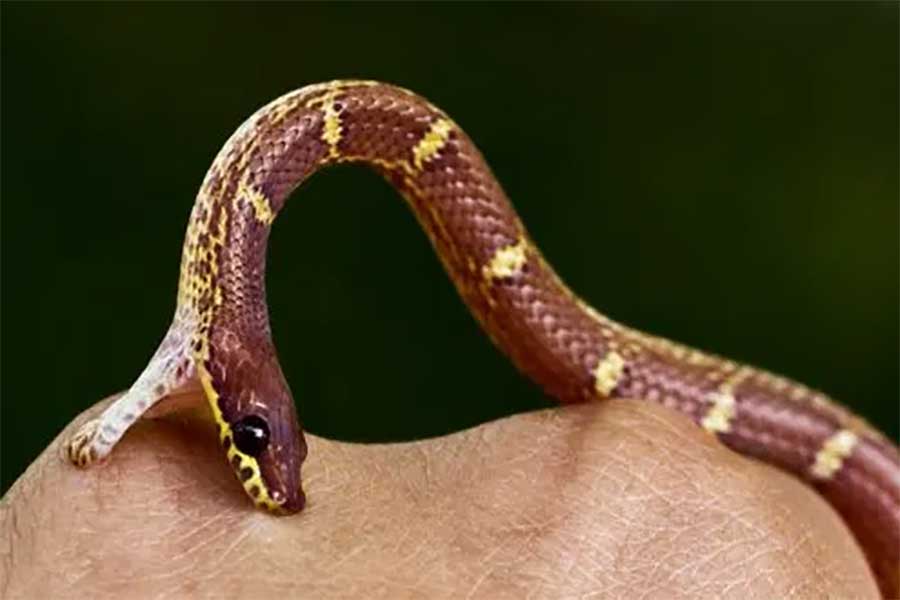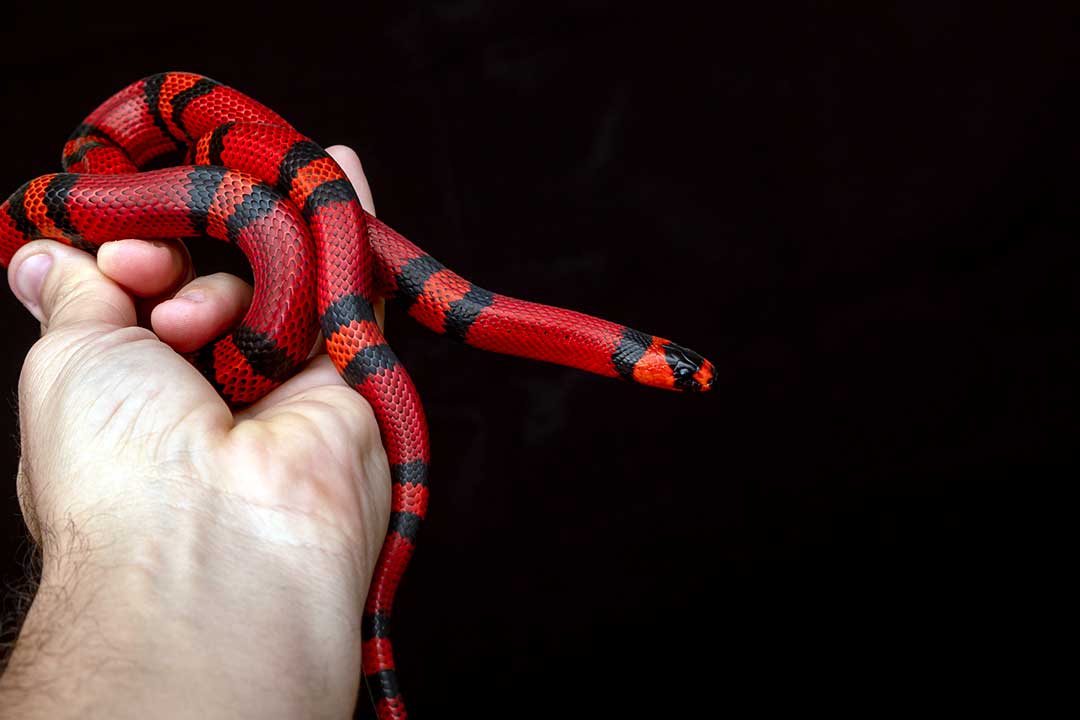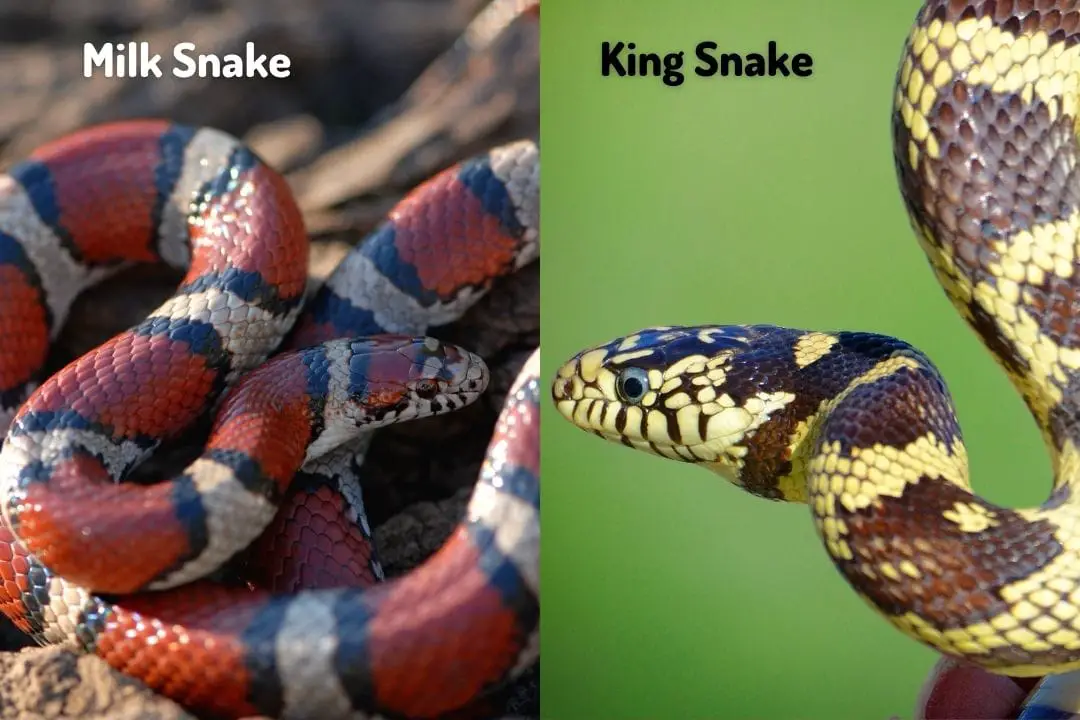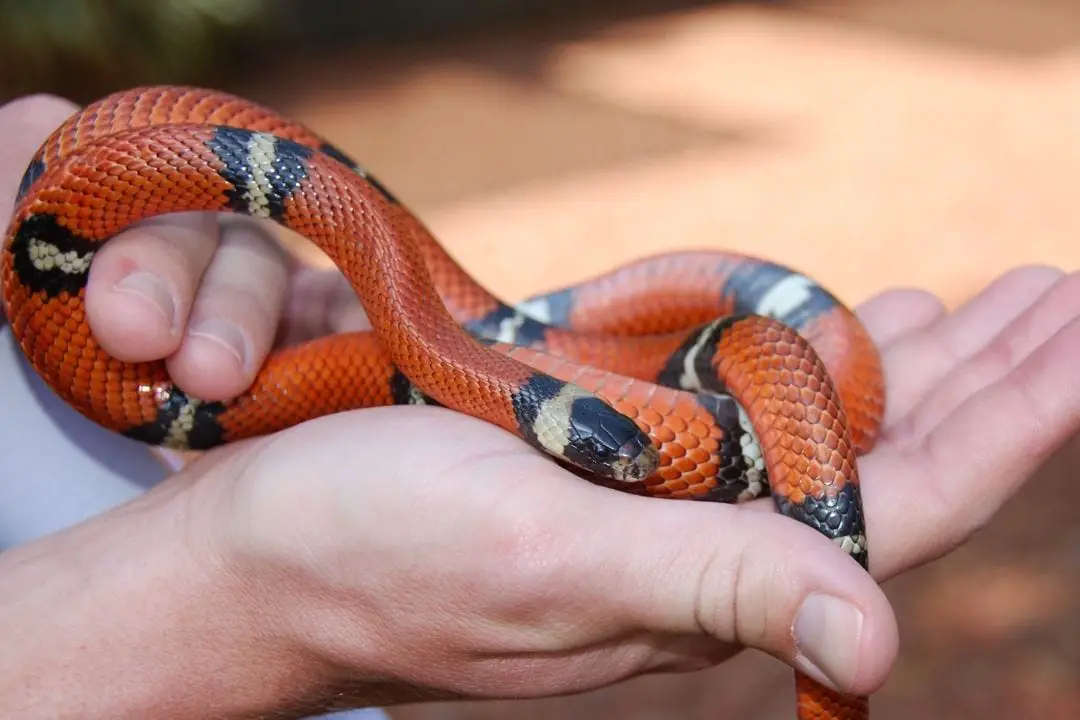Milk snakes (Lampropeltis triangulum) are one of the most widespread species of snake in the Americas. These snakes are a common sight over much of the continents.
These animals frequently mimic venomous snakes that share their habitat, so you may be wondering:
What happens if you are bitten by a milk snake?
As a general rule, milk snake bites are harmless to humans, they have small teeth and are not venomous. If you are bitten, you just need to keep the wound clean and sanitized.
About Milk Snakes
Milk snakes are part of the Lampropeltis genus.
This is the genus that contains kingsnakes. Milk snakes have 25 subspecies that all live in different habitats with different appearances. These snakes can be found from Canada all the way down to Venezuela.
Many of these snakes have a banded appearance that mimics the coral snake. The Eastern milk snake has blotches that mimic the look of the timber rattlesnake that shares a range with them.
These snakes will also rattle their tails to further mimic a rattlesnake. While they do rely on mimicking dangerous snakes to evade predators, these animals are harmless to humans.
Milk snakes have no fangs or venom.
Milk snakes have very small teeth even as adults. They rely on constriction to subdue prey. These snakes rarely bite in the wild. They will typically attempt to flee from predators.
They will also produce a foul-smelling musk to chase off anything that wants to eat it. These snakes will flatten out their head, hiss, and strike to drive off predators as well.
This includes humans. Bites are rare from wild snakes unless you attempt to handle the animal. These snakes are harmless to humans. They are far more at risk from humans.
This is partly because of myths that claim they are a danger to livestock or that they are venomous. However, these animals are actually great to have around since they keep down the rodent population.
In Captivity
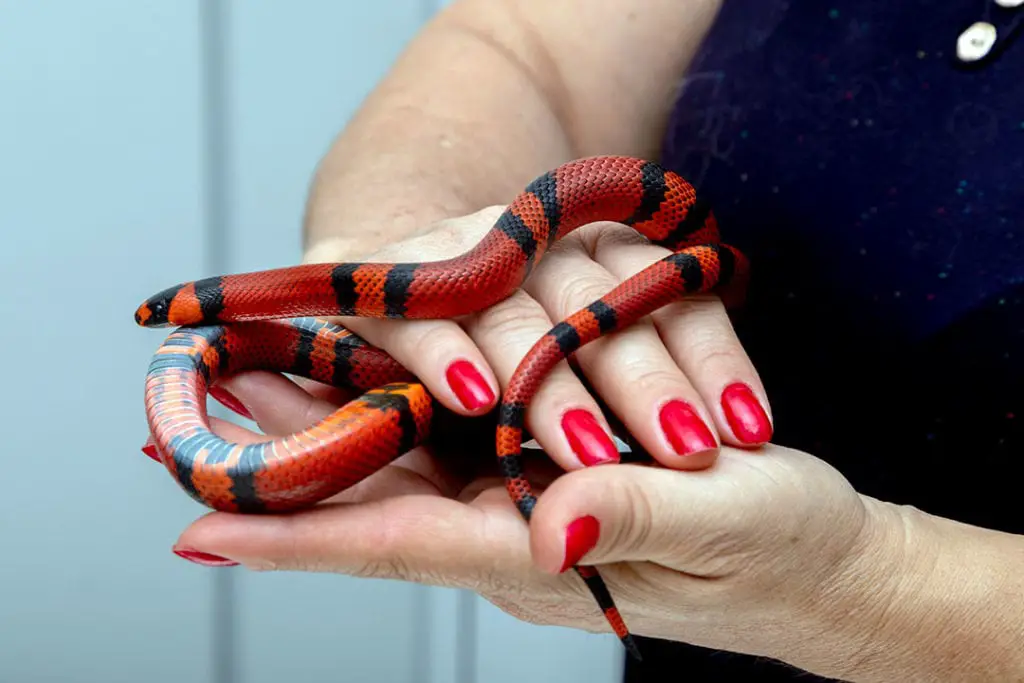
Everything you need to know about caring for Milk Snakes in captivity:
Read our Milk Snake Care Sheet (Complete Guide)
Milk snakes make great pets. This is because they are docile as adults and tolerate handling well. Younger snakes and frightened snakes can bite. Learning snake body language and how to handle them can prevent bites.
If you want to get your snake used to handling from a young age, you need to handle them at least once a week. You should make sure your snake is awake.
Look for movement and tongue-flicking. If your snake is asleep, leave it be. If the snake is awake, make sure it can see you and approach from the side of the snake.
Watch for signs of defensive behavior like retreating, hissing, and striking. If the snake is doing this, it may be best to leave the snake alone.
When your snake isn’t stressed, you can carefully lift it by placing your hand under the middle of its body and take it out. Make sure you support the snake so it doesn’t feel like it will fall. Don’t restrain or squeeze your snake. Allow it to calm down and keep gently handling it for about 5 minutes.
Once it is calm, you can replace the snake in the enclosure. If your snake is too flighty, you may need to take extra time to tame it by getting it used to you. You should get it used to your scent and your hand moving things in the enclosure before moving up to touching it.
Be patient and earn your snake’s trust. Once you have it, bites are unlikely unless the snake is ill or injured.
How to Care for a Snakebite
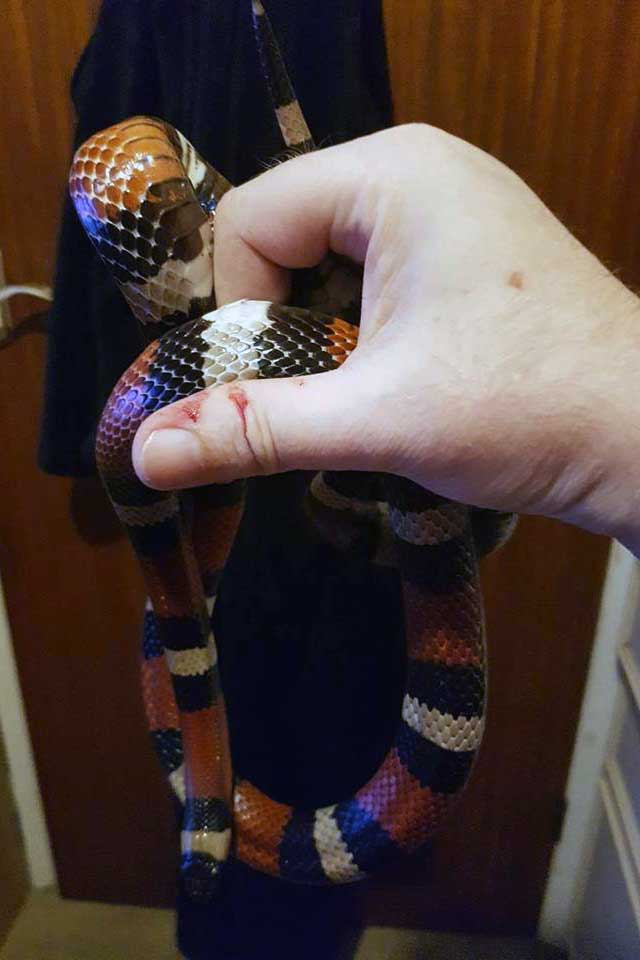
If your snake does bite you, make sure you don’t panic and pull away. This will hurt both you and the snake. A milk snake has very small teeth and most subspecies would have trouble drawing blood on a human. If you pull away, you will have a worse scratch. You can also break the snake’s jaw or even kill it.
Bites from a small species like milk snakes tend to hurt less than a cat scratch or bee sting. If you are bitten, stay calm and put the snake down as soon as it releases you.
Since they are not venomous, you will not need medical attention most likely.
If it was a wild snake, a check-up is a good idea since you may have misidentified the snake. As far as wound care, you will just need to clean and disinfect the injury. You may not even require a bandage, since these snakes rarely break the skin.
One thing to note is that a feeding bite may be worse than a defensive bite. Defensive bites are just to drive you off. A mistaken feeding response means the snake may hang on and keep chewing on you. T
his can happen if you have the smell of food on you like rodents or even other snakes. Ill or irritated snakes may also bite. Snakes that are shedding are also more irritable.
Keep an eye on your snake’s mood and avoid handling it if it seems distressed. If you notice changes such as flushing or the snake seems lethargic, you may need to take your snake to the vet.
Summary
Milk snakes are not dangerous to humans. They have small teeth and are not venomous. If you are bitten, you just need to keep the wound clean and sanitized. If you have any tips for handling snakes or questions, be sure to leave a comment.
